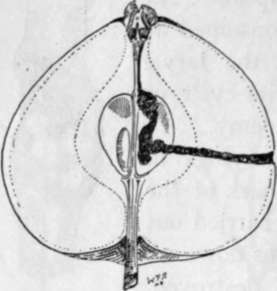Plums
Description
This section is from the book "School Gardening", by W. Francis Rankine. Also available from Amazon: School Gardening.
Plums
The directions already given in reference to preparing the soil, manuring, and planting, must be carefully followed out in the culture of stone fruits. Plums, however,. differ in habit of growth and fruit-bearing from Apples and Pears. In the latter, the fruits are borne on spurs, while in the case of stone fruits, the crop appears on spurs and extension shoots. There is a wide variation in the habits of fruition, yet, since Apricots, Cherries, Nectarines, and Peaches, for various reasons, are not likely to find their way into the school plot, it will suffice to state that Plums bear on wood from two to six years old. Hence, care must be taken in pruning the trees not to remove the older wood that will immediately yield fruit. At the same time it will be found necessary, lor the sake of shape and in order to keep the tree open, to remove young wood. This operation calls for great care.

FIG. 67 APPLE ATTACKED BY CODLING MOTH.
Section of an apple to show the destructive effect of the larva of the Codlin Moth.
Diseases
In addition to the caterpillar pests that often attack the foliage, the Plum is liable to a disease known as gumming. It is common to Plums, Cherries, and Peaches, and it generally results in the loss of the tree when the disease is acute. Hard pruning is one cause of gumming, and undoubtedly poorness of soil has a great influence in its development. Should it appear in a young tree cut the infested growth clean out and feed the tree generously but very carefully with some stimulating food with a view to encouraging it to grow out of the disease. In the case of badly-infested old trees the best course to pursue is removal to the fire since these cannot be cured.

Fig. 68. The Effect Of The Canker Fungus.
Continue to:
